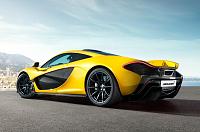Welcome to the Auto Repair Manuals.
Geneva motor show: McLaren P1 - official pictures and details
4 stars based on
1 reviews
-
 Geneva motor show: McLaren P1 - official pictures and details
Geneva motor show: McLaren P1 - official pictures and details






Similar Threads
-
By Auto News in forum News
Replies: 0
Last Post: 04.03.2013, 10:24
-
By Auto News in forum News
Replies: 0
Last Post: 04.03.2013, 10:24
-
By Auto News in forum News
Replies: 0
Last Post: 02.03.2013, 18:24
-
By Auto News in forum News
Replies: 0
Last Post: 01.03.2013, 11:12
-
By Auto News in forum News
Replies: 0
Last Post: 24.12.2012, 08:54
 Local
Local

 Geneva motor show: McLaren P1 - official pictures and details
Geneva motor show: McLaren P1 - official pictures and details



 LinkBack URL
LinkBack URL About LinkBacks
About LinkBacks